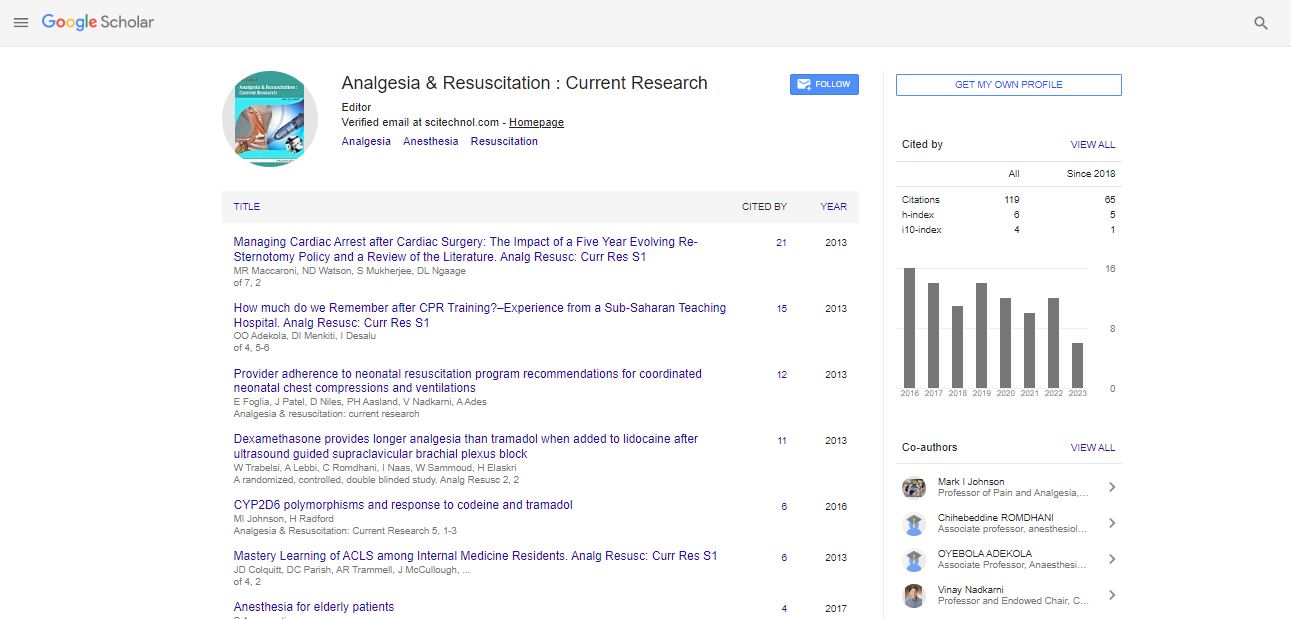Research Article, Analg Resusc Curr Res Vol: 2 Issue: 1
Intravenously Administered Fentanyl is Not Detectable in Exhaled Breath
| Alyssa B. Brzenski*, Jackie Phan, Tony L. Yaksh, Steven S. Rossi and Jonathan L. Benumof | |
| UCSD Medical Center, USA | |
| Corresponding author : Alyssa B. Brzenski UCSD Medical Center, 200 West Arbor Dr, San Diego, CA 92103, USA Tel: 619-543-5297; Fax: 619-543-6162 E-mail: abrzenski@ucsd.edu |
|
| Received: March 15, 2013 Accepted: April 15, 2013 Published: April 22, 2013 | |
| Citation: Brzenski AB, Phan J, Yaksh TL, Rossi SS, Benumof JL (2013) Intravenously Administered Fentanyl is Not Detectable in Exhaled Breath. Analg Resusc: Curr Res 2:1. doi:10.4172/2324-903X.1000104 |
Abstract
Intravenously Administered Fentanyl is Not Detectable in Exhaled Breath
Relapse rates amongst anesthesia residents and CRNAs who were previously addicted to fentanyl, rehabilitated, and considered to be in stable recovery, are reported to be extremely high upon return to the operating room environment. Previous studies have proposed that there is a small amount of fentanyl in the exhalation limb of the anesthesia circuit when patients are given intravenous fentanyl, leading to a novel source of exposure for anesthesia providers and possible sensitization in predisposed individuals. However, prior studies have been limited by their small sample size and questionable study methodology. This study aimed to determine the quantity of fentanyl exhaled after intravenous fentanyl administration.

